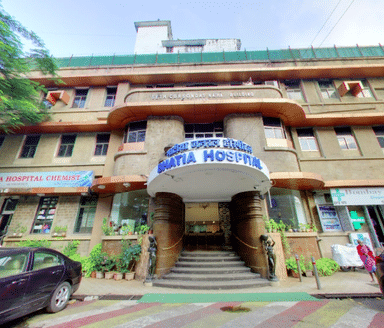Get the App
For Doctors
Login/Sign-up
Bhatia General Hospital, Mumbai
General Surgeon Clinic
Bhatia General Hospital, Mumbai Chikalwadi, J Dadaji Road, Tardeo
1 Doctor
₹ 500 at clinic
About Clinic
We like to think that we are an extraordinary practice that is all about you - your potential, your comfort, your health, and your individuality. You are important to us and we strive to h...read more
Clinic Timing
Mon
Tue
Wed
Thu
Fri
Sat
10:00 AM - 09:00 PM
Clinic Location
Clinic Images
Doctor in Bhatia General Hospital, Mumbai
Get Help
Services
Doctor in Bhatia General Hospital, Mumbai
Dr. J Choksi
General Surgeon44 Years Exp.
MBBS, MS, CFP, EMTP, FAIS, FICS
₹ 500 at clinic
Unavailable Today
Submit Feedback
Submit a review for Bhatia General Hospital, Mumbai
Your feedback matters!

